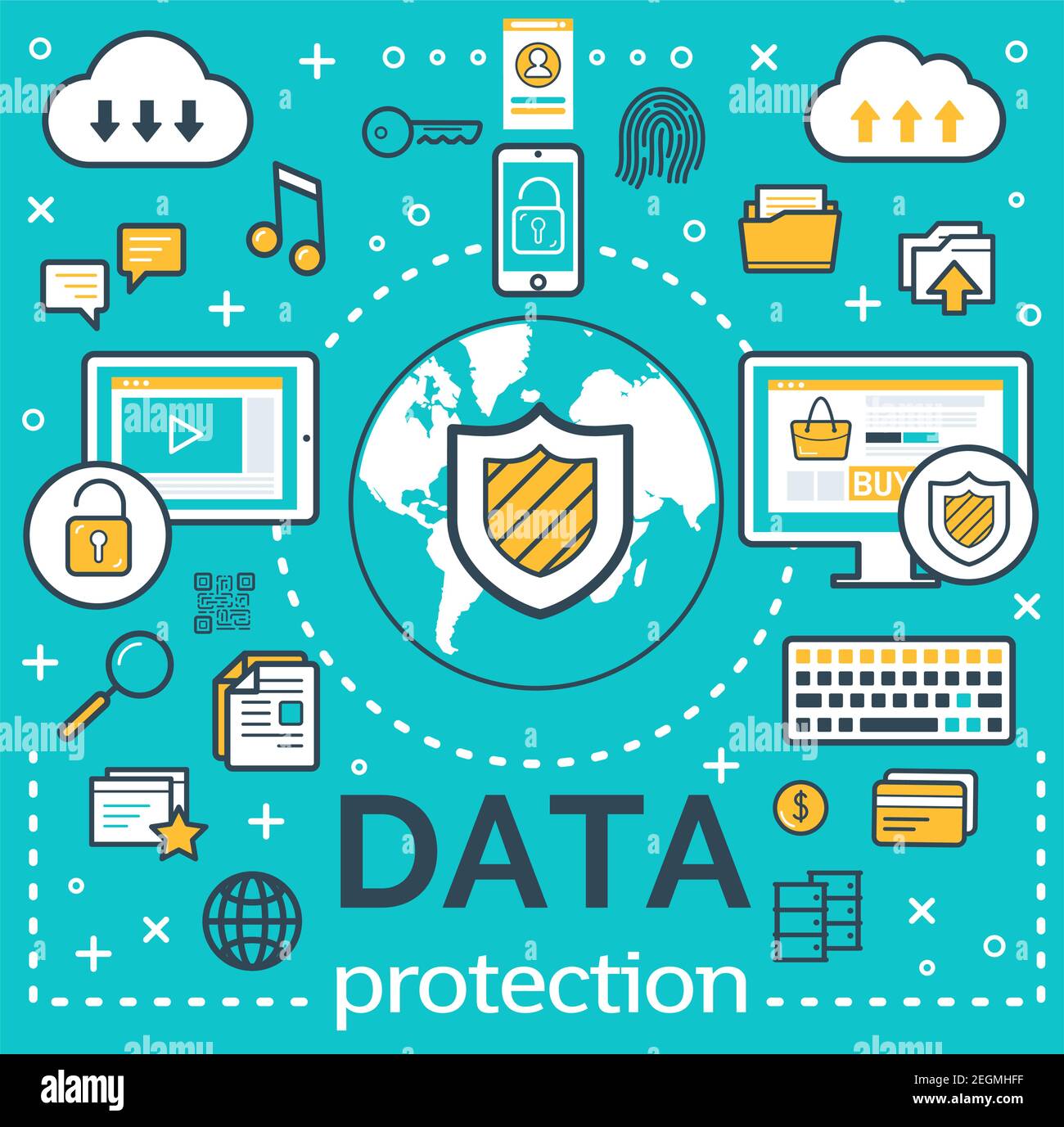Strengthen Your Defenses with Data Cyber Security Solutions for Better Protection
Strengthen Your Defenses with Data Cyber Security Solutions for Better Protection
Blog Article
The Important Duty of Data and Network Safety And Security in Safeguarding Your Information
In a period where information violations and cyber threats are increasingly common, the significance of robust information and network safety and security can not be overemphasized. The implementation of effective safety and security actions, such as encryption and access controls, is important to preserving trust and functional stability.
Recognizing Data Safety
In today's digital landscape, a frustrating majority of organizations grapple with the intricacies of data safety. This important part of infotech entails protecting sensitive information from unauthorized access, corruption, or burglary throughout its lifecycle. Data safety encompasses numerous strategies and innovations, including file encryption, gain access to controls, and data masking, all aimed at protecting information versus violations and vulnerabilities.
A fundamental aspect of data safety and security is the recognition and classification of information based upon its sensitivity and value. This classification assists organizations prioritize their safety and security initiatives, assigning resources to secure the most essential details efficiently. Carrying out durable plans and treatments is important to make certain that staff members understand their role in maintaining data safety and security.
Normal audits and assessments help in identifying potential weaknesses within an organization's data safety framework. In addition, employee training is important, as human error continues to be a significant aspect in data violations. By promoting a culture of safety and security awareness, companies can mitigate threats connected with insider threats and negligence.
Relevance of Network Protection
Network safety and security stands as a keystone of a company's general cybersecurity approach, with roughly 90% of businesses experiencing some kind of cyber threat in the last few years. The importance of network security depends on its ability to shield delicate information and keep the integrity of organization operations. By guarding network infrastructures, organizations can protect against unauthorized access, data breaches, and other malicious activities that might jeopardize their possessions and reputation.
Applying durable network security measures not only helps in mitigating dangers but also fosters depend on amongst stakeholders and clients. When customers are ensured that their monetary and individual details is secure, they are more probable to engage with the organization, bring about boosted consumer loyalty and service development.
Moreover, a well-structured network safety structure assists in conformity with various regulative demands. Organizations must adhere to industry criteria and lawful requireds worrying information defense, and reliable network safety and security methods can ensure conformity, thus preventing prospective charges.

Usual Cyber Threats
Organizations have to continue to be cautious versus a variety of cyber dangers that can weaken their network protection initiatives. Amongst one of the most common dangers is malware, which incorporates infections, worms, and ransomware that can disrupt operations, steal data, or hold details captive. Phishing strikes, where harmful actors impersonate trusted entities to trick people right into exposing sensitive details, continue to expand in class, making user education and learning critical.
An additional prevalent risk is distributed denial-of-service (DDoS) assaults, which overload systems with web traffic, providing them unavailable to reputable individuals. Expert threats, whether unintentional or willful, pose substantial risks as employees might inadvertently subject delicate data or deliberately exploit their gain access to for malicious functions.
Additionally, susceptabilities in software program and hardware can be manipulated by cybercriminals, highlighting the value of routine updates and patch administration. Social engineering strategies even more complicate the landscape, as assaulters control individuals into divulging confidential details through mental control.
As these risks advance, companies must maintain an aggressive method to identify, alleviate, and react properly to the ever-changing cyber hazard landscape, protecting their important information and maintaining trust with stakeholders. fft pipeline protection.
Ideal Practices for Protection
Executing robust safety and security procedures is important for securing sensitive details and keeping functional stability. Organizations should begin by performing comprehensive danger assessments to identify susceptabilities within their systems. This proactive strategy makes it possible for the prioritization of safety and security initiatives customized to the specific needs of the company.
Embracing strong password plans is essential; passwords must be complex, frequently transformed, and managed Website using safe password monitoring tools. Multi-factor authentication (MFA) includes an added layer of safety and security by requiring additional confirmation methods, therefore reducing the danger of unauthorized access.
Routine software program updates and spot monitoring are critical to safeguard against understood vulnerabilities. Carrying out firewall programs and intrusion discovery systems can better protect networks from exterior threats. Staff member training is similarly important; personnel needs to be informed on identifying phishing attempts and recognizing the relevance of information protection methods.
Data security should be used for sensitive information, both at remainder and in transportation, to make sure that also if information is obstructed, it remains hard to reach (fft pipeline protection). Lastly, organizations have to create and frequently test event feedback prepares to make certain quick action in the event of a safety and security breach. By adhering to these best methods, companies can this boost their safety and security position and secure their crucial data assets
Future Trends in Safety And Security
The landscape of information and network protection is consistently developing, driven by improvements in modern technology and the enhancing elegance of cyber dangers. As companies significantly take on cloud computing and IoT tools, the paradigm of security will certainly shift towards a zero-trust design. This technique emphasizes that no entity-- inner or external-- is inherently relied on, mandating confirmation at every gain access to factor.
Furthermore, using artificial knowledge and machine understanding in protection procedures gets on the increase. These innovations allow predictive analytics, permitting organizations to recognize vulnerabilities and potential hazards before they can be manipulated. Automation will likely play a pivotal function in enhancing protection feedbacks, lowering the moment taken to minimize breaches.
In addition, governing structures will certainly remain to see this tighten up, demanding extra rigorous conformity steps. Organizations should stay abreast of developing policies to ensure they meet protection standards.

Conclusion
In verdict, the value of data and network safety can not be overstated in the contemporary electronic landscape. With the prevalence of cyber risks and the raising complexity of regulative demands, companies have to take on detailed safety actions to protect delicate information. By implementing effective strategies and remaining educated concerning arising trends, services can improve their durability versus prospective assaults, guaranteeing data stability and fostering trust amongst stakeholders and customers. Prioritizing safety and security continues to be necessary for operational continuity and lasting success.
In an age where information breaches and cyber threats are significantly common, the significance of robust information and network safety and security can not be overemphasized. Information security incorporates different methods and technologies, including encryption, access controls, and data masking, all aimed at securing info against breaches and vulnerabilities.
A basic aspect of information protection is the identification and classification of data based on its level of sensitivity and importance.The landscape of data and network safety and security is continuously evolving, driven by developments in technology and the increasing refinement of cyber hazards.In final thought, the importance of data and network security can not be overemphasized in the modern digital landscape.
Report this page